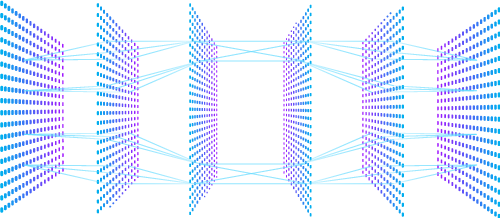What Is An AI Decoder?
AI Decoders play an essential role in AI Art Generation. In this context, a decoder refers to a neural network that is used to translate the output of a generative model into an image or other form of media. Decoders are used in a range of AI art generation techniques, including StyleGAN, CycleGAN, and VQ-VAE, to name a few.
The primary purpose of a decoder in AI art generation is to create a visual representation of the information generated by the generative model. Generative models are designed to learn from a training dataset and then generate new content that is similar in style to the original dataset. For example, a generative model trained on a set of landscape photographs may be used to generate new landscapes that are visually similar to the original images. However, the output of the generative model is often in the form of a series of numbers or other abstract data, which is not easily interpretable by humans.
This is where the decoder comes in. The decoder takes the output of the generative model and transforms it into a visual representation that humans can understand. The decoder essentially maps the abstract data generated by the generative model onto a visual canvas. The output of the decoder is typically an image or a sequence of images, depending on the type of generative model being used.
One of the most popular AI art generation techniques that uses decoders is StyleGAN. StyleGAN is a type of generative model that is trained on a large dataset of images and learns to generate new images that have similar style and content to the original dataset. However, StyleGAN’s output is typically a series of abstract data points that represent the style and content of the generated image. To turn these data points into an actual image, a decoder is used to map the data onto a visual canvas.
Another popular AI art generation technique that uses decoders is CycleGAN. CycleGAN is a type of generative model that is used to translate images from one style to another. For example, CycleGAN can be used to translate a photograph of a city street into a painting of a city street. In this case, a decoder is used to map the abstract data generated by the generative model onto a visual canvas that represents the new style.
In conclusion, decoders are an essential component of AI art generation. They are used to translate the abstract data generated by a generative model into a visual representation that humans can understand. Decoders are used in a range of AI art generation techniques, including StyleGAN, CycleGAN, and VQ-VAE, among others. Without decoders, the output of generative models would not be easily interpretable by humans, and the potential for AI art generation would be severely limited.





